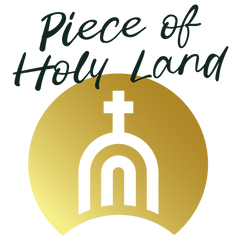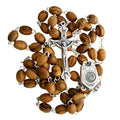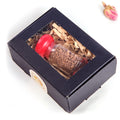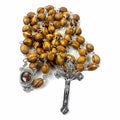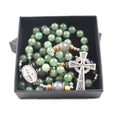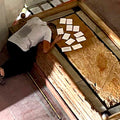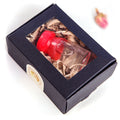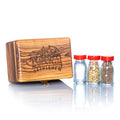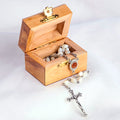Cana of Galilee | Miracle of Water into Wine & Pilgrimage Today
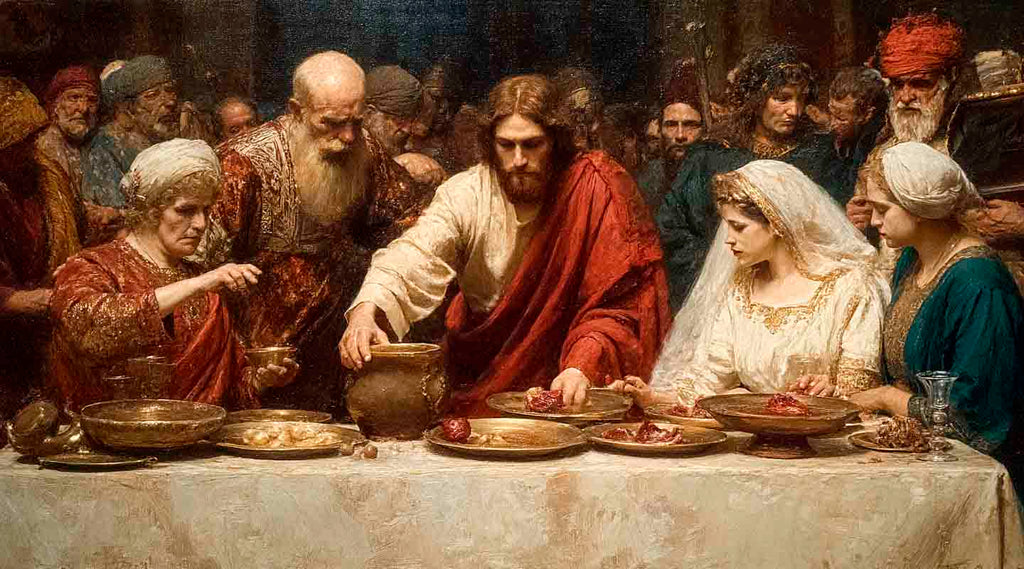
Cana – Miracle and Meaning in Christianity
The First Sign: Jesus Turns Water into Wine
The Gospel of John records the wedding feast at Cana as the occasion of Jesus’ first public miracle. When the wine ran out, Mary approached her son with a quiet confidence, and Jesus instructed the servants to fill six large stone jars with water. As the steward tasted the contents, he marvelled that the best wine had been saved for last. This “sign” revealed the glory of Christ and strengthened the faith of His disciples. It demonstrated Jesus’ compassion for ordinary people and the sanctity of marriage, affirming that joy and celebration have a place in God’s plan.
Geography and the Debate Over Cana’s Location
Where exactly is the Cana of scripture? The New Testament simply notes that it was in Galilee, leaving later generations to speculate. Pilgrims today visit the village of Kafr Kanna, about four miles north of Nazareth, where the Franciscan Wedding Church stands. This chapel, built over earlier Byzantine and Crusader churches, contains a courtyard with replicas of the stone jars and hosts ceremonies for couples renewing their vows. A short walk away is the Greek Orthodox Church of the Marriage Feast, which guards two large stone jars believed by the community to be authentic. Archaeologists, however, have also proposed alternative sites such as Khirbet Qana, an excavated village further north where first‑century wine jugs and a cave church have been found, and Qana in Lebanon, which some traditions favour. Regardless of the precise location, Cana remains a symbol of God’s grace reaching into everyday life.
Franciscan Wedding Church

Other Biblical Events in Cana
Cana appears elsewhere in the Gospel of John. A royal official travelled from Capernaum to Cana to plead for his dying son. Jesus assured him, “Go; your son will live,” and the man returned to find his child healed. The miracle underscored Jesus’ authority even at a distance. Cana was also home to Nathanael (Bartholomew), who initially wondered if anything good could come from Nazareth. When Jesus revealed Nathanael’s hidden thoughts under a fig tree, he exclaimed, “You are the Son of God, the King of Israel.” Cana thus becomes the backdrop for faith born from personal encounters. These stories deepen the village’s biblical resonance beyond the wedding feast.
Symbolism of Wine and Mary’s Intercession
Wine in scripture is a sign of blessing, abundance, and covenant joy. The transformation of water into wine points to the new covenant Jesus brings: grace overflowing where there once was lack. The story also highlights Mary’s role as intercessor. She notices the need before anyone else and simply tells the servants, “Do whatever He tells you.” Her words are the last recorded in the Bible, yet they echo through Christian spirituality: obedience to Christ unlocks miracles. Pilgrims often reflect on this dynamic when they visit Cana, asking for the grace to see needs and bring them to Jesus in prayer.
Cana Greek Orthodox Wedding Church & Monastery

Cana and the Jesus Trail
Modern hikers retrace the steps of Jesus and His early followers along the Jesus Trail, a 65‑kilometre route linking Nazareth to Capernaum via the Galilean hills. Its inspiration comes from the Gospel of Matthew, which records that Jesus “left Nazareth and lived in Capernaum by the lake”. The first day’s journey leads from Nazareth to Cana, inviting travellers to ponder the transition from the hidden life in Nazareth to the public ministry marked by the miracle at the wedding feast. The trail then continues through agricultural terraces and olive groves towards the Sea of Galilee, passing villages and viewpoints that recall parables about sowing and harvest. Walking to Cana by foot connects body and spirit, echoing the journeys of the first disciples and weaving together the sites explored in our blogs on Nazareth, the Sea of Galilee, and Capernaum.
Capernaum

The Wedding Churches: Franciscan and Greek Orthodox
Two main churches commemorate the miracle. The Wedding Church, maintained by the Franciscans, is a tranquil sanctuary with simple architecture and a courtyard where couples renew their marriage vows. Its lower level contains remnants of earlier structures, hinting at centuries of veneration. Inside, visitors often see couples in wedding attire, emphasising Cana’s ongoing role as a place of blessing for marriages. Nearby, the Greek Orthodox Church of the Marriage Feast features vibrant iconography and houses two large stone jars. The liturgy celebrated here is rich in biblical chants that recount the miracle. Between these churches, local shops offer wine labelled “Cana Wedding Wine,” olive oil, and handicrafts, supporting Christian families in the region.
The Wedding Church

Cana in Christian Tradition and Theology
The miracle at Cana is more than a charming story. It is the first of seven “signs” John records to reveal Jesus’ identity. The abundance of good wine points forward to the Eucharist, where ordinary bread and wine become the Body and Blood of Christ. The setting at a wedding also foreshadows the “marriage supper of the Lamb” in Revelation, where Christ unites His Church with perfect joy. In Catholic teaching, Cana underscores the sanctity of marriage as a sacrament. Couples preparing for weddings often reflect on this story, and many choose to bring home tokens such as an olive wood plaque with dry flowers and holy soil, carved in Bethlehem to bless their home.

Modern Pilgrimage and Celebrations
Pilgrims to Cana today often include a wine tasting with local vintners, discovering how Galilean terroir produces distinct flavours. Couples frequently renew their wedding vows during liturgies at the church, receiving commemorative certificates. Some travellers pick up a bottle of Jordan River Holy Water as a reminder of the link between water, baptism, and transformation. Others choose a Olive Wood Rosary with Holy Water, which contains droplets of Holy Water in the centrepiece, combining the themes of Cana and Jordan. Visiting Cana also encourages support for local Christian artisans who craft gifts such as crosses, rosaries, and icons. By purchasing an item like a Comfort Cross, visitors help sustain families who have maintained Christian presence in Galilee for generations.
Spiritual Lessons from Cana
Cana teaches that Jesus cares about the joys and concerns of everyday life. He responds to a wedding guest’s embarrassment by providing an abundance of fine wine; He listens to a desperate father’s plea and heals his son from afar. The miracle reminds believers that God’s timing may differ from ours, Jesus initially says, “My hour has not yet come,” yet He still acts in response to faith. Cana also invites reflection on transformation: water becomes wine, despair becomes celebration, doubt becomes faith. Christians today can bring their own “empty jars” to Christ, trusting that He can fill them with grace. When they light a candle near an olive wood cross or hold a bottle of Jordan River Holy Water, they participate symbolically in the miracle’s message of hope.
Connections to Nearby Holy Sites
Cana’s story sits within the wider tapestry of Galilee. Just to the south lies Nazareth, where the Annunciation occurred and Jesus spent His childhood. To the east lies the Sea of Galilee, the setting for many of His miracles and teachings. Northward is Capernaum, His adopted hometown and the site of Peter’s house. Westward, the Mount of Beatitudes overlooks the lake where He delivered the Sermon on the Mount, and Tabgha commemorates the multiplication of loaves and fishes. Our blogs on each of these sites provide detailed spiritual and historical context, creating a network of pilgrimage information. Together, they invite readers to plan a journey that brings the Gospel to life.
Bringing Cana Home
Not everyone can travel to Galilee, but Cana’s message can be embraced anywhere. Reading the Gospel accounts and meditating on the story is a first step. Incorporating Holy Land items into prayer, such as sprinkling Jordan River Holy Water during family blessings or praying with a Olive Wood Rosary with Holy Water, creates tangible connections to the land of the Bible. Displaying an olive wood cross or Comfort Cross reminds households of the transformative grace that Cana represents. Couples might renew their wedding vows at home or in their parish, invoking the wedding at Cana. In this way, the miracle becomes not just an ancient story but a living inspiration for daily life.
Frequently Asked Questions About Cana (Kafr Kanna)
Q: What miracle happened at Cana?
Jesus’ first public miracle took place at a wedding in Cana when He turned water into wine. This sign revealed His divinity and blessed a humble celebration, showing that God values human joy. The story is found in the Gospel of John.
Q: Where is the biblical Cana located today?
There is debate among scholars, but most pilgrims visit Kafr Kanna in Galilee, where the Franciscan Wedding Church stands. Other proposed sites include Khirbet Qana and a village in Lebanon. All reflect the enduring memory of the miracle.
Q: Why did Jesus turn water into wine?
The miracle signified the arrival of the Messiah and the abundance of the new covenant. It also honoured the couple’s marriage and responded to Mary’s intercession, emphasising that Jesus cares about everyday needs.
Q: What does the wedding at Cana teach about marriage?
The story underscores that marriage is sacred and worthy of celebration. Jesus’ presence and blessing reveal God’s support for marital love and joy. Couples often renew their vows at Cana to seek this grace.
Q: Are there other miracles connected to Cana?
Yes. Jesus healed a royal official’s son while in Cana, demonstrating His power over distance. The apostle Nathanael, also called Bartholomew, hailed from Cana, and his encounter with Jesus appears early in the Gospel of John.
Q: How can I connect to Cana from home?
You can read and meditate on the wedding at Cana, pray the Rosary, and incorporate Holy Land items into your devotion. Sprinkling Jordan River Holy Water or holding a Comfort Cross while praying can symbolically link you to Cana.
Q: Which products remind us of Cana’s miracle?
A bottle of Jordan River Holy Water evokes the element transformed by Jesus, while an olive wood cross and a Olive Wood Rosary with Holy Water connect you to the Holy Land’s craftsmanship and spiritual heritage.
Q: What other Holy Land sites are near Cana?
Cana lies near Nazareth, Capernaum, Sea of Galilee, Mount of Beatitudes, and Tabgha Together, these sites form a pilgrimage route explored in our other blogs and along the Jesus Trail, inviting deeper reflection on Jesus’ life.
SHARE:

